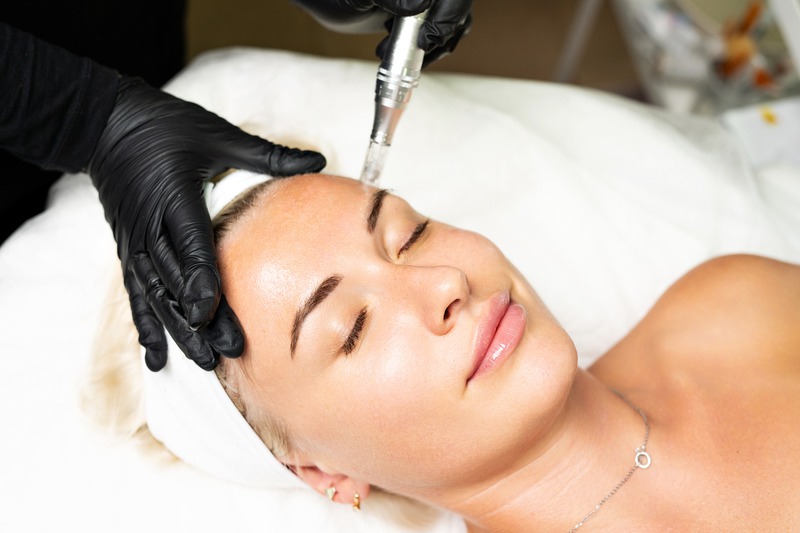There’s something truly magical about a confident smile. Whether you’re looking to brighten your teeth, perfect your bite, or completely transform your look, choosing the right professional to guide your smile journey is vital. While cosmetic dentistry can deliver dramatic results, not all dentists are created equal. It’s important to know what to look for so you can make a decision you’ll be happy with for years to come—after all, it’s your smile, and you deserve the best.
Understanding What a Cosmetic Dentist Does
First things first—what exactly does a cosmetic dentist do? Cosmetic dentistry focuses on improving the appearance, and often the function, of your teeth, gums, and bite. Procedures may include:
-
Teeth whitening
-
Veneers
-
Bonding
-
Invisalign and braces
-
Implants
-
Smile makeovers
While general dentistry focuses on oral hygiene and disease prevention, cosmetic dentists have specialized training and a keen eye for facial aesthetics. The right cosmetic dentist can transform not only your smile but also your overall confidence.
Why Qualifications Matter
Ensuring your cosmetic dentist is fully qualified isn’t just about looking for degrees on the wall. It’s about trust, safety, and the quality of your outcome. Some treatments are irreversible—once enamel is removed or teeth are reshaped, there’s no going back. That’s why experience, skill, and education play a huge role in making your decision.
Key Qualifications to Look For
-
Dental Degree: Make sure they have a degree from an accredited dental school.
-
Licensing: They should be licensed to practice dentistry in your area.
-
Specialized Training: Look for postgraduate programs or continuing education courses focused on cosmetic procedures.
-
Professional Associations: Membership in cosmetic dental organizations shows they’re committed to ongoing learning and excellence.
Experience Goes Beyond Years in Practice
It’s tempting to choose “the most experienced dentist” based solely on years in the business, but experience in cosmetic procedures specifically is what counts. Remember, cosmetic dentistry is equal parts medical science and artistry. Ask your potential dentist:
-
How many years have you focused on cosmetic dentistry?
-
How many procedures like mine do you do each year?
-
Can I see before-and-after photos of your patients (not just stock images)?
Evaluating Technology and Techniques
Cosmetic dentistry has seen major technological advances over the years—everything from digital smile design to 3D imaging and same-day crowns. Dentists who invest in up-to-date technology often provide more predictable and comfortable results.
Modern Tech That Makes a Difference
-
Digital Imaging: Preview your new smile before the procedure even begins.
-
Laser Dentistry: Faster healing, less discomfort, and minimal bleeding for soft tissue procedures.
-
CERAC & CAD/CAM: Fabricate crowns, veneers, or inlays in a single visit.
Ask the dentist what equipment and software they use and how it enhances the cosmetic dental experience.
Reputation in the Community and Among Patients
Word of mouth is still one of the best ways to find out if a cosmetic dentist is truly trustworthy. Look for reviews from real patients, paying special attention to those that mention the dentist’s skill, bedside manner, and the lasting results of their procedures.
-
Check online review platforms and forums.
-
Ask friends, family, or co-workers for personal recommendations.
-
Consider testimonials that discuss aftercare and follow-up support.
Nothing speaks louder about a dentist’s abilities than happy, satisfied clients.
Consultation Is Key
A consultation is your opportunity to get a feel for the dentist’s work, communication style, and approach to patient care. Bring your questions and see if the dentist listens, explains options clearly, and makes you feel comfortable. Remember, a great cosmetic dentist doesn’t rush through appointments; they take time to understand your goals, expectations, and any anxieties you might have.
Questions to Ask at Your Consultation
-
What are my treatment options?
-
What are the pros and cons of each option?
-
Can you show me mock-ups or digital previews?
-
How much experience do you have with the specific procedure I’m considering?
-
What is the expected recovery and maintenance like?
Personalized Care and Communication Style
One factor that’s often overlooked is how well you connect with the dentist and their staff. A friendly, attentive approach can make a huge difference, especially if you’re nervous about dental work. Personal comfort is an important part of building trust.
-
Is the dentist easy to talk to and willing to answer your questions?
-
Does the office staff make you feel welcome and valued?
-
Are your concerns being genuinely addressed?
Remember, a truly qualified cosmetic dentist will never pressure you into a procedure you’re not comfortable with—they’ll guide you to the best decision for your unique needs.
Transparency in Pricing and Payment Options
Cosmetic dental procedures can be an investment, and understanding the costs upfront will help you avoid surprises. Trusted cosmetic dentists offer clear, detailed estimates and are happy to explain what’s included.
-
Ask for a written treatment plan with all fees itemized.
-
Find out about payment plans or financing options if needed.
-
Clarify what’s covered by insurance (if anything) and what’s out of pocket.
Never hesitate to ask for a second opinion if something doesn’t seem right or if pricing feels unclear.
Consider Location and Convenience
While skill should be your top priority, practical factors also influence your decision. Is the office near your home or work? Are their hours compatible with your schedule? Cosmetic dental procedures may sometimes require multiple visits, so finding someone nearby can make the process much smoother.
-
Ample parking or easy public transportation access
-
Flexible hours or weekend appointments
-
Emergency support is available if needed after a procedure
Balancing convenience with expertise ensures you’ll keep up with appointments and follow-ups for the best outcome.
Ensuring Long-Term Satisfaction
Quality cosmetic dentistry is about more than a quick fix—it’s about choosing someone who cares about your long-term dental health and happiness. Once you’ve narrowed down your choices, see how each practice supports patients after their procedures. Do they offer follow-up appointments, warranties, or maintenance advice?
-
Clear guidance on care routines to maximize your results
-
Regular check-ins or reminders for follow-up visits
-
Accessibility for questions or concerns after treatment
You deserve peace of mind even after you leave the dental chair.
Community Insight: The Value of Local Experience
If you’re searching for a dentist Richmond, BC, take note of the local reputation and how connected your potential provider is to the community. Dentists with strong community ties may be more invested in building lasting relationships with patients and are typically well-versed in catering to the unique needs and preferences of people in your area.
Review Before and After Cases
One of the most reliable ways to judge a cosmetic dentist’s skill is by reviewing their before-and-after photos. A reputable dentist will have an extensive portfolio of their patient cases, not just generic stock images. Spend some time looking over these images, noting:
-
The natural appearance of the results (not overly white or fake-looking)
-
Cases similar to your starting point and goals
-
Consistency in quality across multiple patients
You want to be sure that the dentist’s style aligns with your expectations and that their results stand the test of time.
Ask About Comprehensive Cosmetic Care
Many patients are surprised to learn that choosing a dentist in Richmond, BC, often means you can benefit from a wide range of in-house cosmetic and restorative services. This convenience can save you time and streamline your treatment, especially if your smile transformation involves multiple procedures or specialties.
What Sets Great Cosmetic Dentists Apart
-
A comprehensive menu of treatments
-
Skilled in both cosmetic and restorative dentistry
-
Effective coordination with specialists when necessary
Staying Informed With the Latest in Cosmetic Trends
Cosmetic dentistry trends change quickly, so being aware of new techniques and materials is vital. Whether you’re interested in minimally invasive options or state-of-the-art procedures, reputable providers offering cosmetic dentistry in Richmond are typically proactive about keeping up with the latest developments. Don’t be afraid to ask your prospective dentist what new treatments or technology they offer and how it compares to more traditional approaches.
Final Thoughts
Choosing a qualified cosmetic dentist isn’t just about credentials and accolades—it’s about finding someone who listens, cares, and can deliver the results you’re dreaming of. Take your time, do your research, ask questions, and trust your gut. The perfect dentist for you will combine technical skill, artistic sensibility, and genuine compassion for your well-being. Here’s to a confident new smile and a dentist you can trust for all the milestones ahead!










